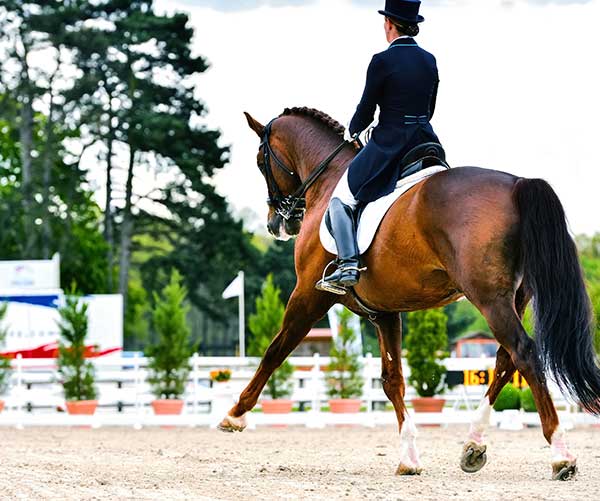
Dressage is a unique and captivating discipline of riding that displays the elegance and athleticism of horses.
Dressage is a form of horse riding that originated in ancient Greece and has evolved over the centuries to become a competitive equestrian discipline. It involves the training of a horse to perform specific movements and maneuvers in a precise and controlled manner, often in a show or competition setting.
The word "dressage" is derived from the French word "dresser," which means "to train" or "to teach." The origins of dressage can be traced back to the ancient Greeks, who valued the beauty and athleticism of their horses and developed a system of training that focused on balance, obedience, and finesse. The Greek philosopher Xenophon wrote extensively about the principles of horsemanship and the importance of training horses for military purposes.
During the Middle Ages, dressage was further developed in the courts of Europe, where it became a highly prized art form. The Renaissance saw the emergence of the "academy style" of dressage, which placed a greater emphasis on the aesthetics of the horse and rider and the development of more complex and elaborate movements.
In the 19th and early 20th centuries, dressage became more standardized, with the creation of formalized training systems and the development of international competitions. The first modern Olympic Games, held in Athens in 1896, included dressage as a demonstration sport, and it became an official Olympic event in 1900.
Today, dressage is governed by the International Federation for Equestrian Sports (FEI) and is a popular spectator sport at both the Olympic Games and the World Equestrian Games. It is also a popular form of recreational riding for riders of all levels, with dressage schools and clubs found around the world. In the US, the United States Dressage Federation (USDF) governs sanctioned competitions. Following is a list of levels, from lowest (most basic) to most advanced:
USDF Levels (specific to the United States):
- Introductory (includes three different tests, A through C)
- Training Level (includes three different tests, 1-3)
- First Level (includes three different tests, 1-3)
- Second Level (includes three different tests, 1-3)
- Third Level (includes three different tests, 1-3)
- Fourth Level (includes three different tests, 1-3)
FEI Levels (governed internationally)
- Prix St. Georges
- Intermediare I
- Intermediare A
- Intermediare B
- Intermediare II
- Grand Prix
- Grand Prix Special
In conclusion, dressage has a rich and varied history that spans over 2,000 years. From its origins in ancient Greece to its modern-day status as a competitive equestrian discipline, dressage has evolved and adapted to become a highly respected and beloved art form.
 Dressage is a unique and captivating discipline of riding that displays the elegance and athleticism of horses.
Dressage is a unique and captivating discipline of riding that displays the elegance and athleticism of horses.
